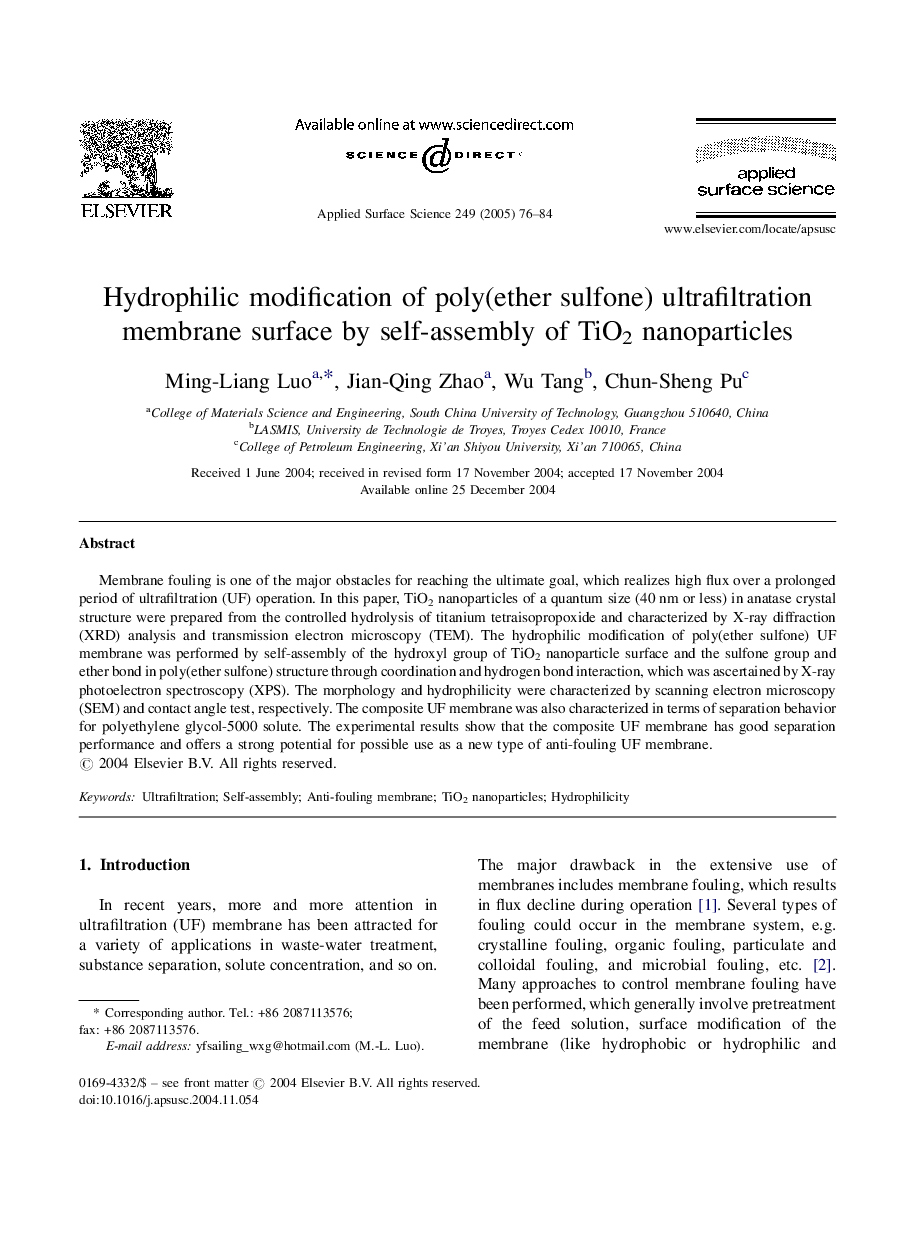| Article ID | Journal | Published Year | Pages | File Type |
|---|---|---|---|---|
| 9572402 | Applied Surface Science | 2005 | 9 Pages |
Abstract
Membrane fouling is one of the major obstacles for reaching the ultimate goal, which realizes high flux over a prolonged period of ultrafiltration (UF) operation. In this paper, TiO2 nanoparticles of a quantum size (40Â nm or less) in anatase crystal structure were prepared from the controlled hydrolysis of titanium tetraisopropoxide and characterized by X-ray diffraction (XRD) analysis and transmission electron microscopy (TEM). The hydrophilic modification of poly(ether sulfone) UF membrane was performed by self-assembly of the hydroxyl group of TiO2 nanoparticle surface and the sulfone group and ether bond in poly(ether sulfone) structure through coordination and hydrogen bond interaction, which was ascertained by X-ray photoelectron spectroscopy (XPS). The morphology and hydrophilicity were characterized by scanning electron microscopy (SEM) and contact angle test, respectively. The composite UF membrane was also characterized in terms of separation behavior for polyethylene glycol-5000 solute. The experimental results show that the composite UF membrane has good separation performance and offers a strong potential for possible use as a new type of anti-fouling UF membrane.
Related Topics
Physical Sciences and Engineering
Chemistry
Physical and Theoretical Chemistry
Authors
Ming-Liang Luo, Jian-Qing Zhao, Wu Tang, Chun-Sheng Pu,
